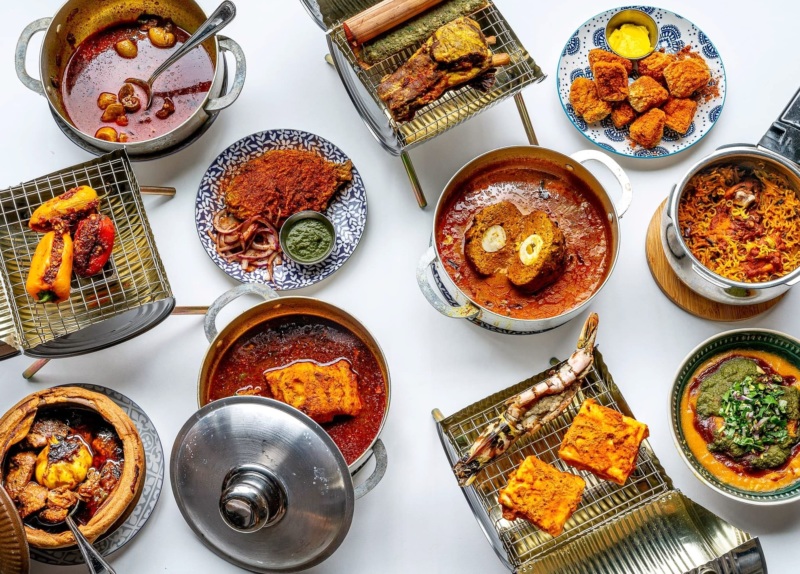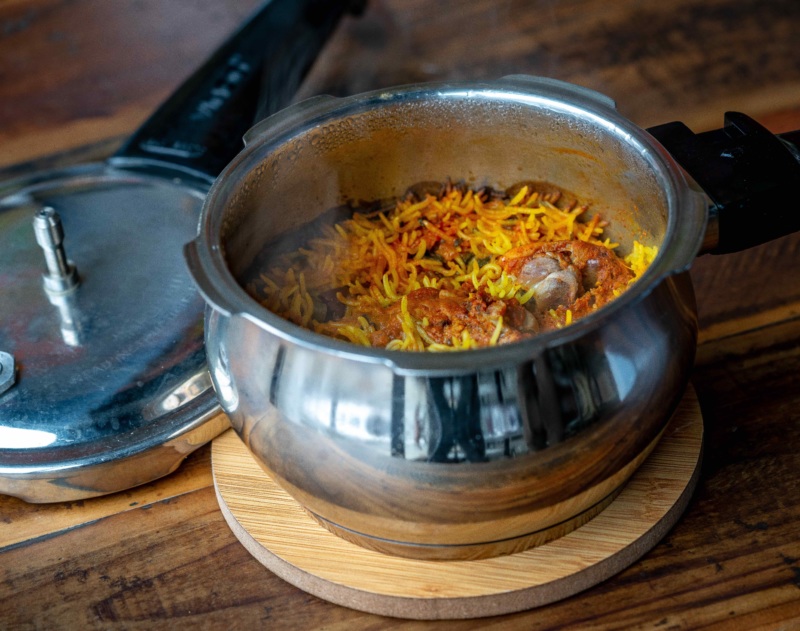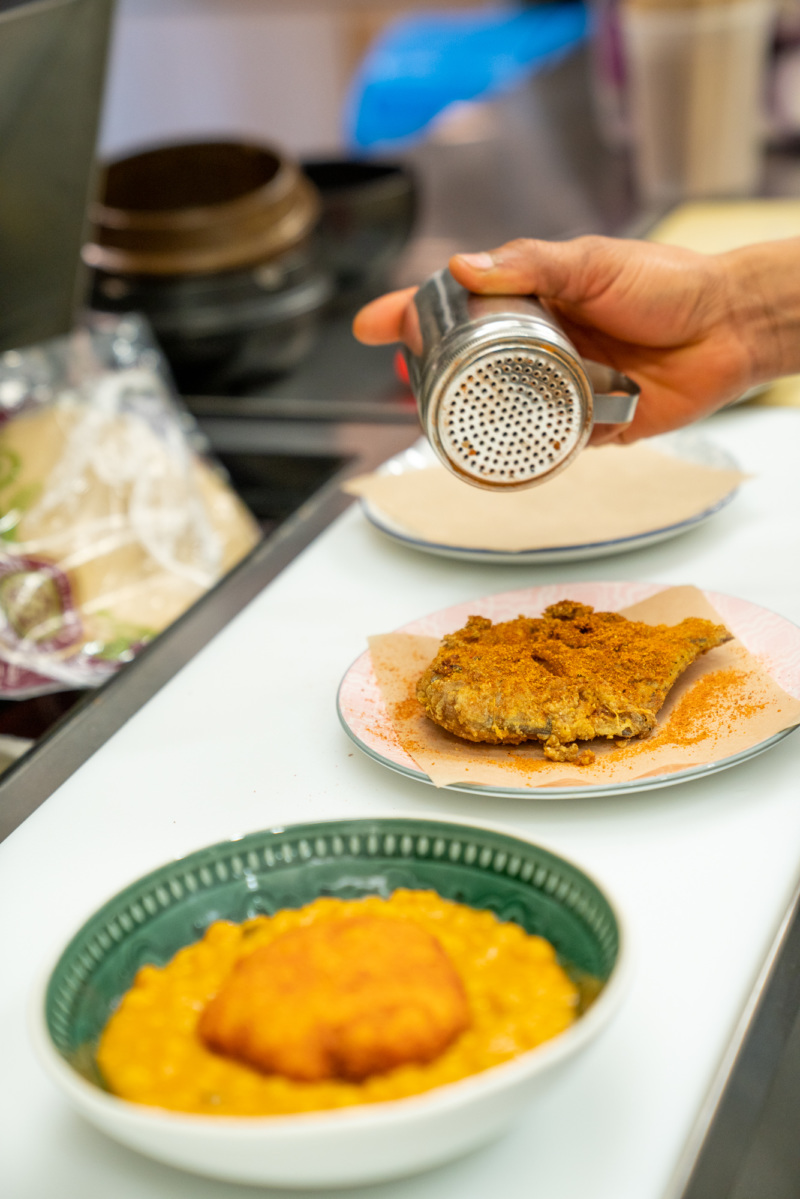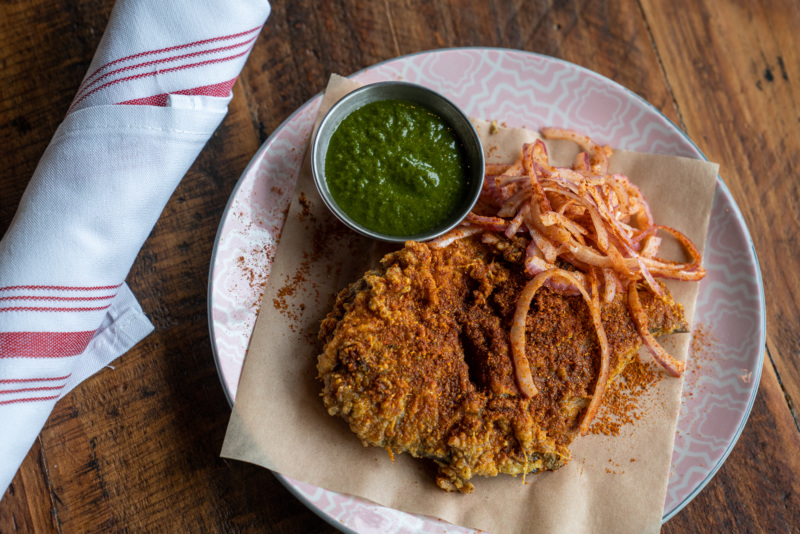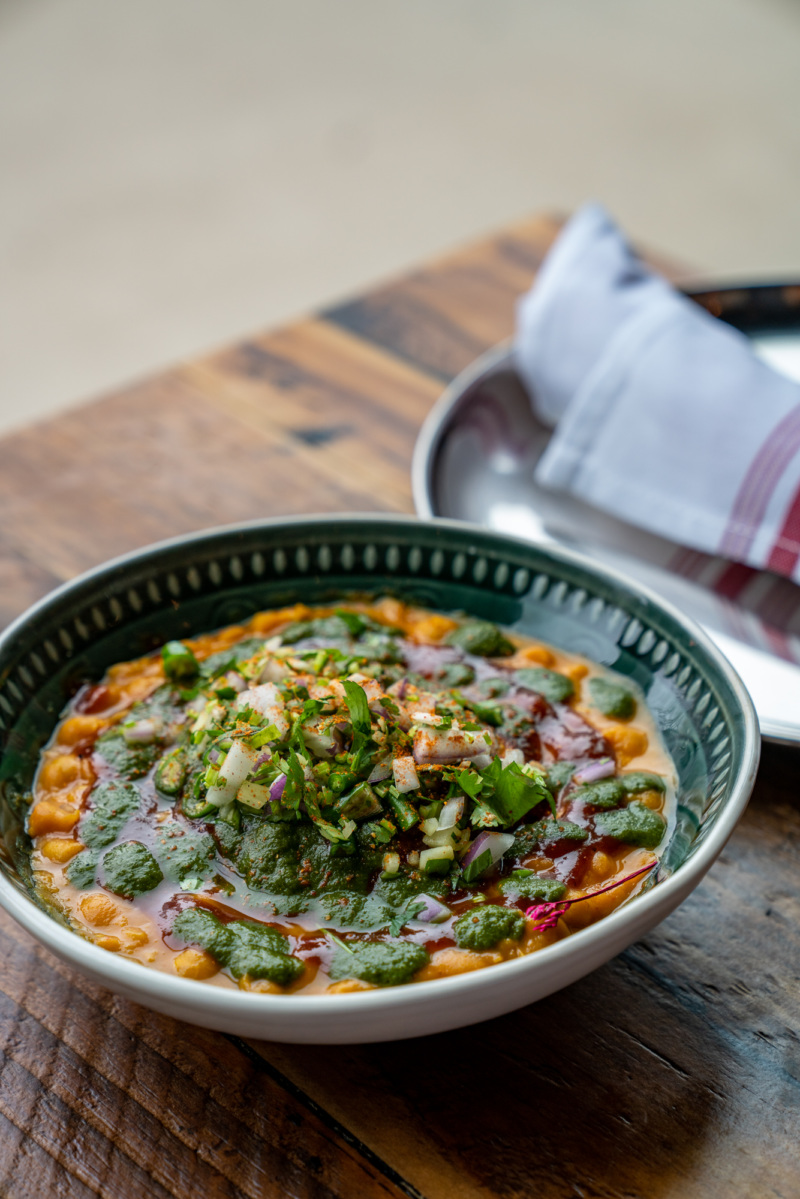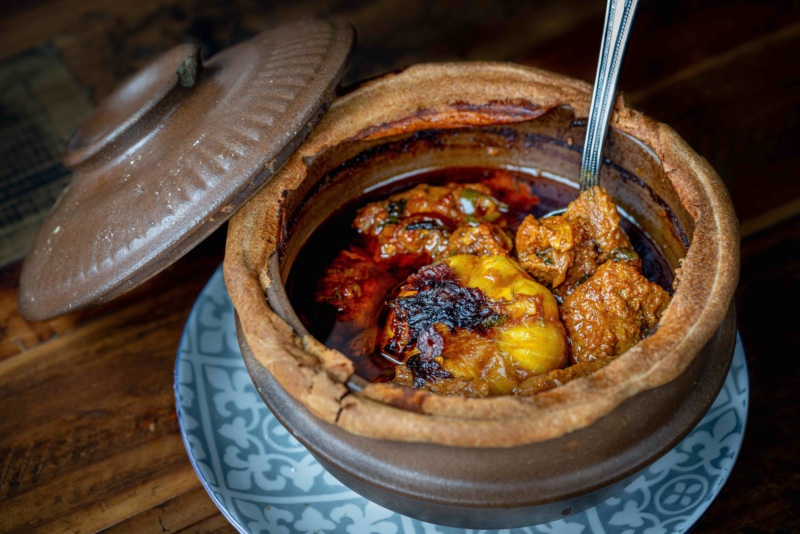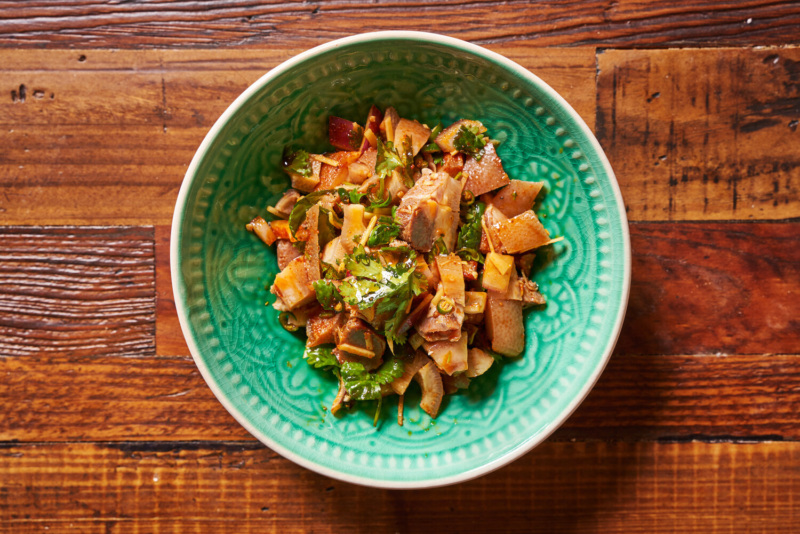
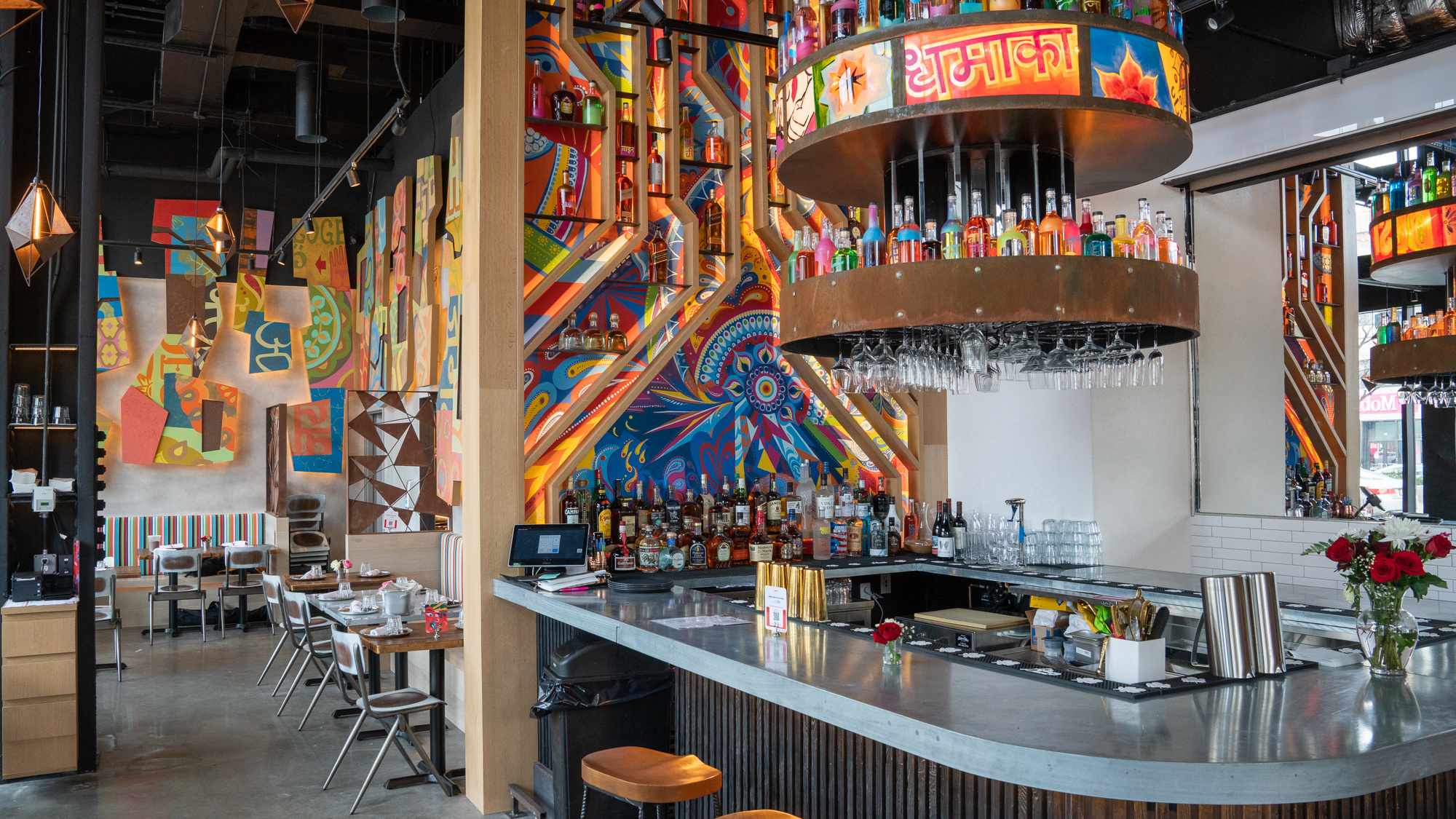
The One Who Keeps the Book New York
How to Get Into New York’s Dhamaka
When Dhamaka first opened in the Essex Street Market in March 2021, the spot’s sister restaurants, Adda and Rahi (now Semma), already had strong followings. Crowds of regulars lured by chef Chintan Pandya’s distinct, boisterous cooking style — and Dhamaka’s somewhat limited seating capacity — soon catapulted the Indian restaurant into one of the toughest places to get a reservation in the city.
Glowing press from local and national food critics far and wide has cemented Dhamaka’s hot-restaurant status. These days all of the restaurant’s reservations get snapped up almost as soon as they’re released on Resy, says front-of- house lead Tsepak Dolker, who goes by Tina.
The draw of Dhamaka is multifold: there’s the warm, relaxed atmosphere backed by the buzz of busy Delancey Street; a cocktail list that seamlessly blends fruit and spice; and, most importantly, a small-but-mighty kitchen that churns out shareable, unforgettable dishes that are unlike anything else found at New York City’s Indian restaurants. For instance, Dhamaka’s Rajasthani khargosh, a slow-braised whole rabbit dish, requires so much preparation that the staff only takes one order per night, and it must be requested at least two days in advance, if not more.
If you still haven’t been able to get a table at Dhamaka — or you’re eager to find out how to order the rabbit — here are Dolker’s tips to get you inside, all part of our ongoing series, The One Who Keeps the Book.
- The Freedom of Cooking In America, or, How the Duo at Dhamaka Learned Not to Compromise
- Dhamaka, Gage & Tollner, Porcelain, and More: New York Dining’s Best in 2021
- Welcome to Semma, the Latest Hit From the Same Team Behind Dhamaka and Adda
- New York’s Dhamaka Wants to Change Everything You Know About Indian Food
- Photos: Behind the Scenes at New York’s Dhamaka
Resy: How many seats are there at Dhamaka?
Dolker: There are 70 to 78 seats.
When do reservations drop on Resy?
Exactly one month in advance, at midnight.
How quickly do reservations get booked up?
Right away, honestly.
Even at midnight?
Oh yeah. I’d say the next morning if I wake up at 8 a.m. and I open it, it’s pretty much booked. But it’s a one-month-in-advance plan. Just because we get booked up fast doesn’t mean you won’t be able to get in. We recommend getting on the Notify list. There are always last-minute cancellations and no-shows.
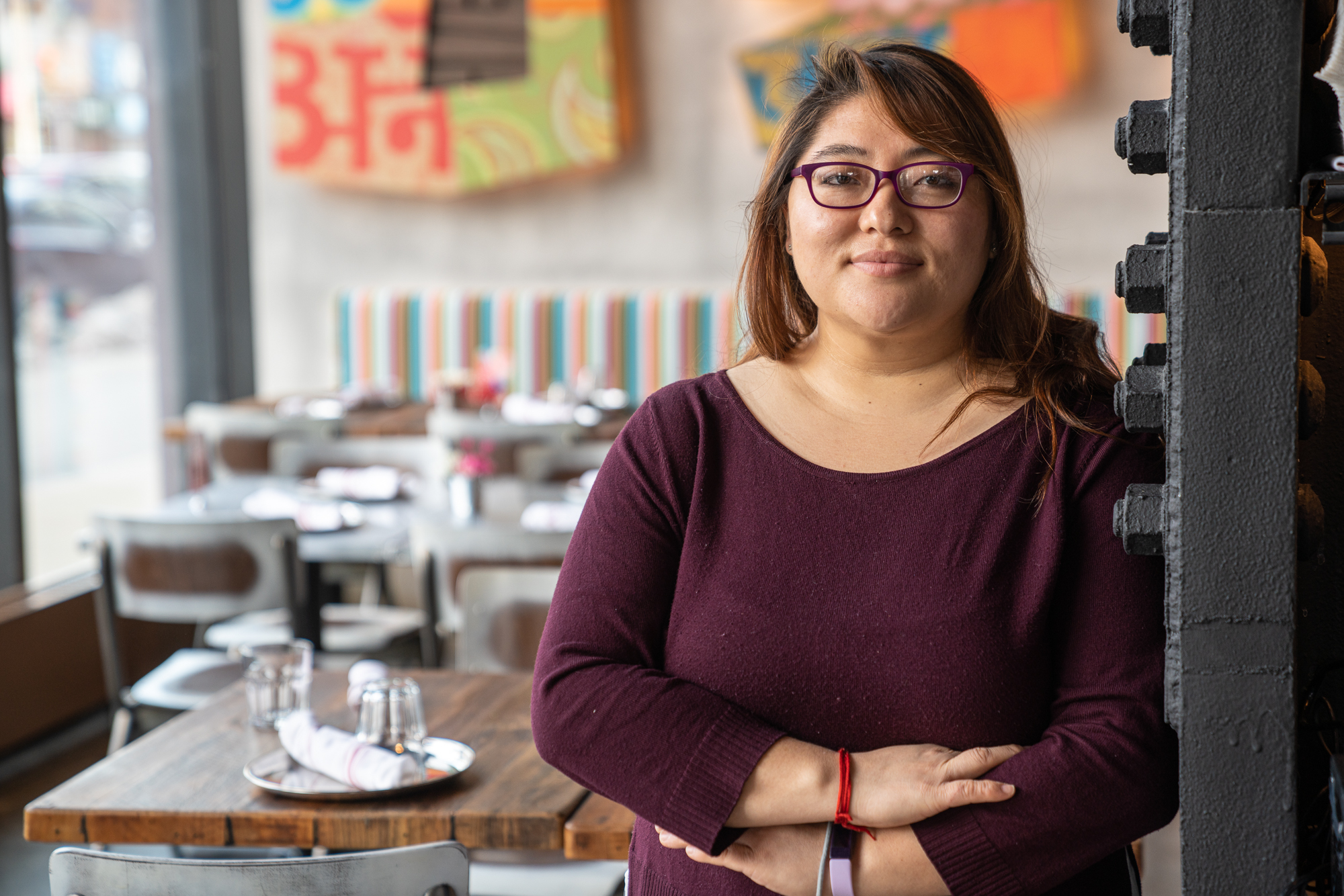
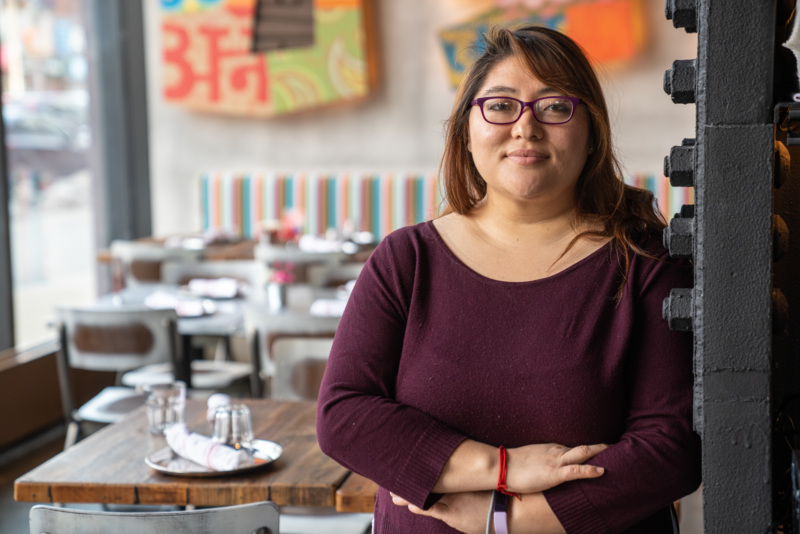
Are there any seats reserved for walk-ins?
We don’t reserve any seats for walk-ins. Sometimes we are able to seat some. We always recommend that if you decide to walk in, come in at 5 p.m. and add yourself on the waitlist. But that’s a live waitlist, and not a Notify list. Something always comes through for those that come in early. Later, it’s a little bit hard.
How long is the wait for walk-ins, usually?
We don’t give any time estimate for walk-ins, unless I see there’s a table available, and I will go ahead and seat them. Otherwise, we just add them on the waitlist, and we say you’ll get a text from us when a table opens up. We don’t give any estimate because obviously the reservation is a priority. They’ve been waiting for so long. If there’s a cancellation or no-show, or if people just eat really quickly and leave because they have something to do — whatever the reason is — I may have enough time to seat them until the next party comes in.
What time does the restaurant open?
5 p.m.
When are your busiest times?
We’re busy every day. On weekends we’re able to seat more because people have plans more — they come in, they eat really quickly, and they leave right away. But I’d say the volume of the kitchen is the same across the days.
How many covers do you do on your busiest nights?
The average on a busiest night is 170 or 180.
How long is your Notify list on average?
That varies, depending on the weekend or weekday. Weekday is between 800 and 1,000. Weekend has been a lot more — 1,500, I think, is the average.
Is there a specific day or time when reservations might open up at the last-minute?
Because we say online that you have to cancel 24 hours in advance, or there’s a fee, a lot of times it happens around that time. So, I’d say the day before is when we’re normally able to get the Notifys out.
My tip for everyone would be: Order the rabbit as soon as you get the reservation.
Dhamaka is in the Essex Street Market. How has that contributed to the restaurant’s vibe?
When we just opened, we had a lot of support and people coming and congratulating us. It’s really nice to be part of the community for sure. If you run out of something, let’s say you’re out of lemon, or one thing that you need, one ingredient, it’s right there. Or if you need something, there’s always someone wanting to help in the market.
The website talks about the food showing the “forgotten side” of India. What does that mean?
I think for a lot of people, even still today, when you think of Indian food, people constantly think about tikka masala or just the classic British influence that everyone else knows. But the forgotten side of India is basically the lesser-known regions, like Bihar, or other regions that not many people know the dish of. I’d say it’s from all from the outskirts of cities. Some items are from Mumbai. But basically, it’s a lot of dishes that have been served in that town or village for thousands of years, but not known to the world. So, I would say Dhamaka would be the first restaurant where the chef has decided to bring those items all together.
What’s the secret to being able to successfully order the rabbit dish?
The dish is traditionally known as a royal dish, from Rajasthan. It used to be known back then, if people go out and hunt, that’s the dish of the day, they cook that, and it’s served to the royals. The reason we serve one a day is because it takes so much preparation time, one. And the second is our kitchen is so small. If we decide to do more than one, the quality of the food will go down, the space of the kitchen will take more time. The requirement, if you look online or on the menu, says you have to make sure to order 48 hours ahead. The 48 hours is for preparation, marination, all the time together. But my tip for everyone would be: Order the rabbit as soon as you get the reservation. There have been a few times where right at midnight, one month in advance, we had four or five emails come in. And whoever emails first, that person gets it. So don’t just wait and say, “I can order three days ahead.” I’d order right away, as soon as you get the reservation confirmed.
Can you give me a sense of what the dish is like, when it comes to the table?
It’s a whole experience itself. Personally, I’d recommend if it’s your first time, maybe you should just dine-in as usual and not do the rabbit. Because if you do the rabbit, you can’t try much of anything else. It’s a whole course and it’s a lot of sides. It usually serves about three to five, depending on how much a person can eat and what they want to try. It’s a whole rabbit—that means it has the head, the feet, it has all the organs, it’s been marinated ahead of time. It’s in a big clay pot, it’s sealed, and it’s cooked in an oven a long time before it’s served. That comes with options of bread, it comes with lentils, vegetables, rice.
The bar is really cozy and inviting, even though it’s small. Can you order food there?
We have a section on the menu that says snacks, grills, and there are mains, which are four items, then there’s rice which is biryani pulao. The mains and the biryani pulao are not available at the bar. But the snacks, grills, and sides are available at the bar.
How do you snag a seat at the bar?
The bar has only 10 seats. The first three seats on the dining area side, we leave empty. That’s like our lounge. You know when you go to a fancy restaurant, and you sit and wait until the rest of the party arrives? You can sit there and order your drink and wait — we don’t seat until the full party arrives. And the other seven, we use it first come, first serve, or whoever wants to sit there. We have a lot of regulars who come later at night and go and sit there for a few hours.
What else should people order, especially if they may not score another reservation again for awhile?
Honestly, a lot of people’s favorite, for those who’ve been here many times, are the grills. Every item that’s on there is so different and so good.
Which ones would you recommend?
The paneer tikka. I’ve had so many paneers in my life, including in India and everywhere in the United States, but the paneer tikka is really special. It’s locally sourced milk and it’s freshly made daily. A lot of places, it’s hard to do daily, because it takes a lot of time to make a paneer. The other one I really like is the tabak maaz. It is a little bit on the fattier side, but the lamb meat is falling off the bone. It’s so rich, and so good.
Dhamaka has a seating-time limit — tables of up to four have to be done within 90 minutes, and tables of more than five, within two hours. How have people reacted to that?
We haven’t had that many issues. Of course, there are always a few people who are like, “You guys have too many rules, you guys have too many systems.” I think it’s all about communication. For example, if we have a walk-in and we do have a table for one hour and fifteen minutes, we tell the customer: We need the table in one hour and fifteen minutes. It’s also about training, the servers, the staff, to be able to serve everything within that time limit. We were struggling at the beginning. As a restaurant, you know, you always have a new system, and you keep changing the rules for whatever is better. But for now, it’s going really well.
Do you take bookings for larger groups?
Maximum we take is six. We did that because our bar is small, the kitchen is small, as I keep mentioning, so we were more trying to focus on the quality of the service, the food, the drinks, rather than having food quantity as much as we can fit in. Technically speaking, we can fit more than 200 people a night. But we’re not doing that because we’re trying to focus on the quality of everything.
How do you keep the team so down-to-earth and friendly, when the restaurant is so busy each night? During my visit I was surprised at how nice everyone was.
I’m so glad you feel that way because that is honestly our goal. I do go to some other restaurants and I feel like, wow, they have the perfect ambience, they have great food, great everything. But I don’t know — it’s the service, right? Even the chef says that, and I 100% agree. One of the reasons I’m here is the way they think. The way they think is, you know, when you’re inviting someone to the house, you want them to feel like it’s their house. You want them to feel comfortable. They can sit however they want, do whatever they want. Because of that we don’t follow any sort of things like the upscale restaurants do. We don’t say you have to stand here a certain way, you have to talk a certain way. Of course, there’s professionalism. But we’re casual. We welcome you. We want you to feel comfortable. That’s our main goal before even serving things to the customers.
What’s a really good, juicy tip to getting a table at Dhamaka?
Two things. One is to plan things ahead of time. And for people who really want to come in, just be patient and add yourself on the Notify list. And even if you do walk in, just wait around. If you can be nice and be patient, we try our best to accommodate all.
Dhamaka is open from 5 to 10 p.m. Tuesdays through Sundays.
Lesley Téllez is a writer in New York City. Follow her on Instagram or through her newsletter. Follow Resy, too.
Discover More

Stephen Satterfield's Corner Table



